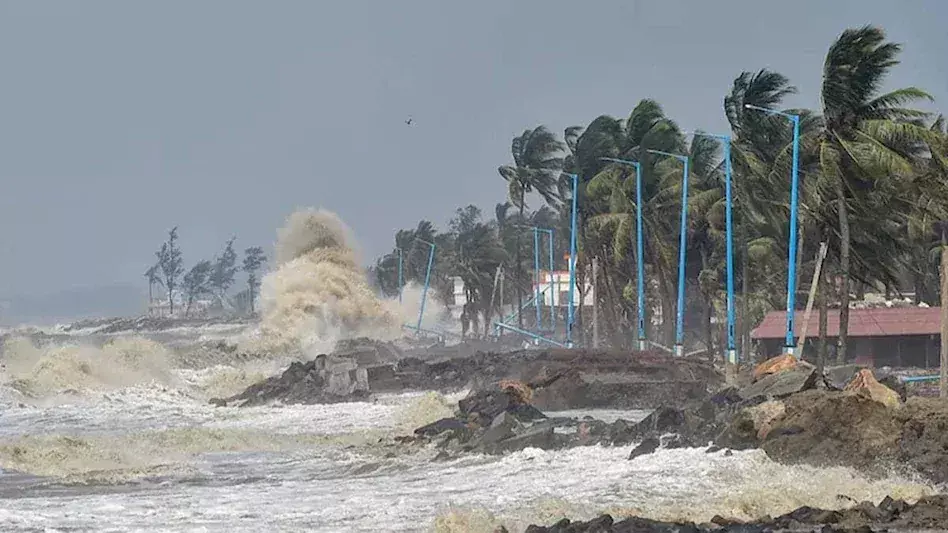Cyclone Asani: 3 killed; standing fruit, paddy crops destroyed in AP
Three people were killed and standing horticulture and paddy crops over thousands of acres of land were washed away in the cyclone.
By Newsmeter Network
Cyclone Asani has left a trail of death and destruction in Andhra Pradesh.
Three people were killed and standing horticulture and paddy crops over thousands of acres of land were washed away in the cyclone.
Mandal Parishad Territorial Constituency (MPTC) member Tummala Kasulu (40) was killed after a Palmyra tree fell on him when he was on way to Upparapalli village on his bike under S Rayavaram Mandal in Anakapalle district.
K Srinivasa Rao, 43, was killed after a portion of a house collapsed due to heavy rain at Kamanagaruvu village in Amalapuram Mandal of Konaseema district. The third person was killed when the lightning struck at Jaladanki Mandal in the Nellore district.
Officials said that the heavy rains and high-velocity winds damaged mango, banana, turmeric, maize, and papaya crops in Kadapa, Kurnool, Prakasam, Krishna, and West Godavari districts.
Multiple Recurvatures
IMD said that severe cyclonic storm "Asani" exhibited multiple recurvatures in its track/path. Most of the models suggested a change in direction of movement of the system from northwest to northeast near the coast. However, the deep depression (remnant of cyclone Asani) moved slowly northward/northwestwards on May 11 till evening and slowly west-southwestwards thereafter.
It was mainly due to the fact the cyclonic storm was supposed to move northeastwards near the coast under the influence of a short amplitude westerly trough in middle and upper tropospheric levels approaching from the west. However, as the storm weakened while approaching towards the coast, the height of the storm decreased being limited to middle tropospheric levels.
As a result, the steering wind of the storm changed being dominated by southeasterly winds and led to a northwestward movement. However, the northwestward movement was restricted/ blocked due to an anticyclone lying over peninsular India. Thus, the system moved slowly and remained practically stationary near the coast followed by slow west-southwestward movement till its weakening into a well-marked low-pressure area on May 12 morning over the region.
Monitoring of ASANI
IMD maintained round the clock watch over the north Indian Ocean and the cyclone was monitored since April 28, about 8 days prior to the formation of low pressure area over south Andaman Sea on May 6 and 9 days prior to the formation of depression over southeast Bay of Bengal.
The cyclone was monitored with the help of INSAT 3D and 3DR, polar orbiting satellites and available ships and buoy observations in the region. The system was also monitored by Doppler Weather RADAR (DWR) Machilipatnam from May 10 morning.
Various global models and dynamical-statistical models run by Ministry of Earth Sciences (MoES) institutions, were utilized to predict the genesis, track, landfall and intensity of the cyclone. A digitized forecasting system of IMD was utilized for analysis and comparison of various models' guidance, decision making process and warning products generation. Typical imagery from INSAT 3D (R) and DWR Machilipatnam.